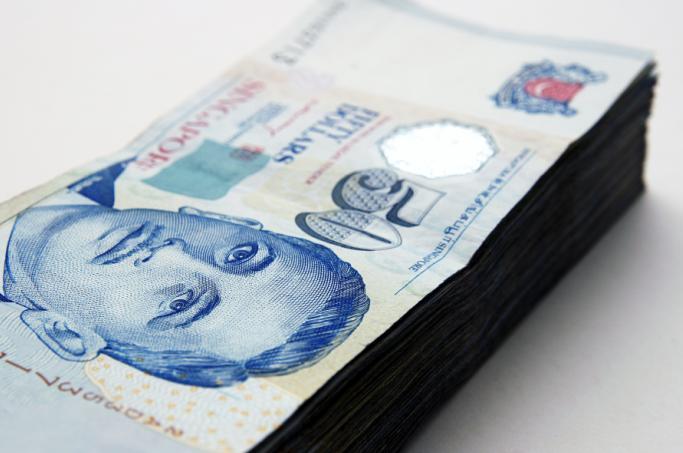
Risk currencies lose ground
More are opening long positions amidst a shift in sentiment.
IG Markets Singapore said:
The Singapore dollar reached a low against the greenback yesterday morning, briefly pushing towards 1.2150. However we saw weakness return as the cross pushed back towards the range traded on the previous day.
We have seen a shift in client sentiment in the last 24 hours with more clients opening long positions, taking the stance that for the time being the SGD advance may have ended.
The latest move back towards 1.22 has been aided by the general USD strength seen in the overnight session as risk currencies on the whole lost ground.
Today the focus remains on Europe, though with little in the way of real developments expected out of the Brussels summit, it could be a quiet end to the week.
DBS Group Research meanwhile noted:
Our end-2012 target for USD/SGD is now lower at 1.21 instead of 1.26 set in before mid-September. We also expect the Singapore dollar (SGD) to post new record highs in 2013. Below are the following reasons for our optimism on the exchange rate.
First, tail risks of the Eurozone crisis have been mitigated by looser monetary policies in the advanced economies. In September, fears of a break-up in the euro were substantially eased by the European Central Bank’s Outright Monetary Transactions Scheme and the Federal Reserve announcing a third round of quantitative easing measures.
Second, as the world drew comfort that the Eurozone crisis would not evolve into another Lehman-style 2008 global financial crisis, green shoots started to appear for the world economy. In the US, fiscal cliff worries were partially offset by strongerthan- expected jobs/housing data.
In China, real GDP growth has been accelerating on a quarter-on-quarter basis, notwithstanding slower year-on-year growth figures. The China Statistics Bureau expects the economy to top the full-year 7.5% growth target for 2012 on the back of mild rebound in 4Q12. This suggested that 3Q12 was potentially the bottom for China’s decelerating growth cycle.
Third, the weak US dollar has returned. One month after QE3, Fed Chairman Ben Bernanke urged emerging countries to let their currencies appreciate at the recent International Monetary Fund (IMF) meeting. A weak USD has traction if it is accompanied by an appreciating Chinese yuan.
From its weakest point in August, the Chinese yuan has appreciated sharply over the past two months. In both the onshore and offshore markets, the yuan is no longer reporting year-to-date depreciation, but appreciation.
The People’s Bank of China (PBOC) indicated recently that while inflation has been stable, it watching for inflation risks, especially from QE3. The need to stay vigilant against inflation was probably why the Monetary Authority of Singapore (MAS) did not ease its exchange rate policy last Friday.
This brings us to our final point. QEs have led to capital inflows into Asia. This time appears be no exception. In Singapore, foreign reserves have stopped languishing in a range, and posted a new record high in September.
If sustained, which we think it will, the rise in reserves will be accompanied by a stronger Singapore dollar. It is with this in mind that we see the possibility and potential for a record high Singapore dollar exchange rate in 2013.
























 Advertise
Advertise










